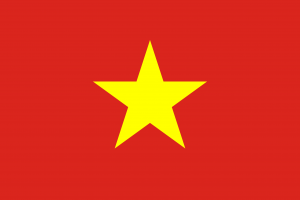Difference between revisions of "Language/Vietnamese/Grammar/Nouns-and-Gender"
m (Quick edit) |
m (Quick edit) |
||
| Line 1: | Line 1: | ||
<span pgnav> | |||
{| class="wikitable pg_template_nav" | |||
|[[Language/Vietnamese/Vocabulary/Counting-21-and-Beyond|◀️ Counting 21 and Beyond — Previous Lesson]] | |||
|[[Language/Vietnamese/Grammar/Pronouns-and-Personal-Pronouns|Next Lesson — Pronouns and Personal Pronouns ▶️]] | |||
|} | |||
</span> | |||
{{Vietnamese-Page-Top}} | {{Vietnamese-Page-Top}} | ||
| Line 79: | Line 86: | ||
{{Vietnamese-Page-Bottom}} | {{Vietnamese-Page-Bottom}} | ||
<span links></span> | <span links></span> | ||
<span pgnav> | |||
{| class="wikitable pg_template_nav" | |||
|[[Language/Vietnamese/Vocabulary/Counting-21-and-Beyond|◀️ Counting 21 and Beyond — Previous Lesson]] | |||
|[[Language/Vietnamese/Grammar/Pronouns-and-Personal-Pronouns|Next Lesson — Pronouns and Personal Pronouns ▶️]] | |||
|} | |||
</span> | |||
Revision as of 17:39, 29 March 2023
| ◀️ Counting 21 and Beyond — Previous Lesson | Next Lesson — Pronouns and Personal Pronouns ▶️ |
As a Vietnamese language teacher with 20 years of experience, I know that understanding nouns and gender is crucial for students to reach the A1 level of proficiency. In this lesson, we will dive into the gendered nature of Vietnamese nouns.
Finish this lesson and explore these related pages: Conditional Mood & Adjectives.
Gender in Vietnamese
Vietnamese, like other languages, assigns gender to nouns. However, unlike Romance or Germanic languages, Vietnamese has no articles, and the gender of a noun is generally determined by the final consonant of the word. There are three types of endings: "-o" for masculine, "-a" for feminine, and "-ê" for neuter.
It's essential to note that the gendered nature of Vietnamese nouns is not absolute, and there are many exceptions; therefore, it's essential to memorize them through practice.
Examples
Here are some examples of gendered nouns in Vietnamese:
| Vietnamese | Pronunciation | English |
|---|---|---|
| Con chó | Kawn cho | Dog (masculine) |
| Con mèo | Kawn me-aw | Cat (feminine) |
| Trẻ em | Tre em | Children (neuter) |
Note that while certain endings like "-ông," "-ánh," "-chú" are typically masculine and "-cô," "-chị" are typically feminine, many words fall outside of these conventions.
Practice
To better understand the gendered nature of Vietnamese nouns, try to practice with any Vietnamese texts and identify the gender of each noun based on its ending.
For additional practice, try to construct sentences with a subject and object of different genders. For example, "Tôi yêu con chó của chị."
Conclusion
In Vietnamese, the gender of a noun is typically determined by its final consonant, but as previously noted, many exceptions exist. By understanding how nouns are gendered in Vietnamese, students move closer to achieving the A1 level of proficiency.
Remember, practice is crucial! So take the time to practice this lesson with any Vietnamese texts you come across.
Sources
- Vietnamese grammar - Wikipedia
- Does Vietnamese have grammatical gender? If so, where is it used ...
- IS VIETNAMESE A HARD LANGUAGE? Tiếng Việt có phải là một ...
With this lesson finished, you may want to explore these additional pages: Articles & Past Tense Verbs.
Other Lessons
- Modal Verbs
- Give your Opinion
- Tenses
- How to Use Have
- Ask Questions
- Past Tense Verbs
- Nouns
- Adverbs
- Future Tense Verbs
- Pronouns and Personal Pronouns
| ◀️ Counting 21 and Beyond — Previous Lesson | Next Lesson — Pronouns and Personal Pronouns ▶️ |
